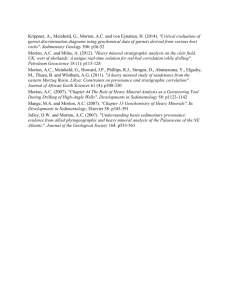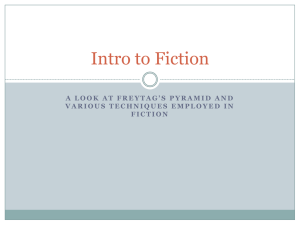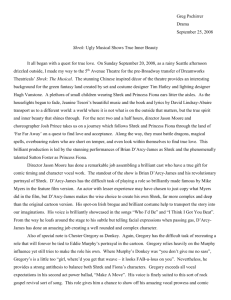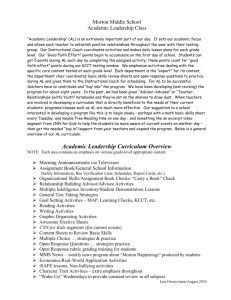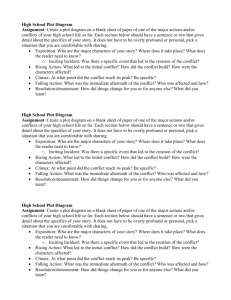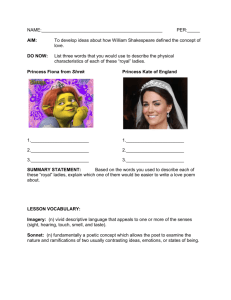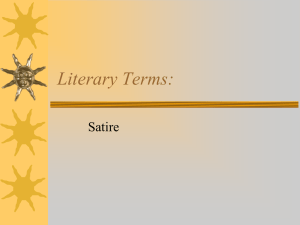Freytag`s Pyramid : How to Analyze a Story
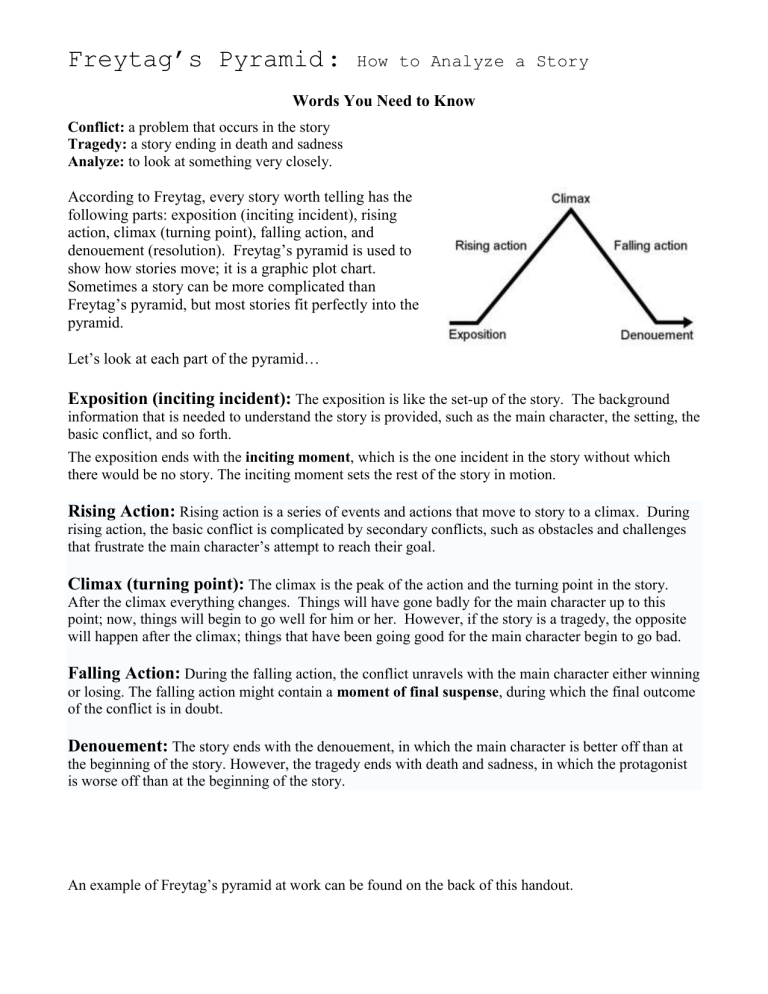
Freytag’s Pyramid :
How to Analyze a Story
Words You Need to Know
Conflict: a problem that occurs in the story
Tragedy: a story ending in death and sadness
Analyze: to look at something very closely.
According to Freytag, every story worth telling has the following parts: exposition (inciting incident), rising action, climax (turning point), falling action, and denouement (resolution). Freytag’s pyramid is used to show how stories move; it is a graphic plot chart.
Sometimes a story can be more complicated than
Freytag’s pyramid, but most stories fit perfectly into the pyramid.
Let’s look at each part of the pyramid…
Exposition (inciting incident): The exposition is like the set-up of the story. The background information that is needed to understand the story is provided, such as the main character, the setting, the basic conflict, and so forth.
The exposition ends with the inciting moment , which is the one incident in the story without which there would be no story. The inciting moment sets the rest of the story in motion.
Rising Action: Rising action is a series of events and actions that move to story to a climax. During rising action, the basic conflict is complicated by secondary conflicts, such as obstacles and challenges that frustrate the main character’s attempt to reach their goal.
Climax (turning point): The climax is the peak of the action and the turning point in the story.
After the climax everything changes. Things will have gone badly for the main character up to this point; now, things will begin to go well for him or her. However, if the story is a tragedy, the opposite will happen after the climax; things that have been going good for the main character begin to go bad.
Falling Action: During the falling action, the conflict unravels with the main character either winning or losing. The falling action might contain a moment of final suspense , during which the final outcome of the conflict is in doubt.
Denouement: The story ends with the denouement, in which the main character is better off than at the beginning of the story. However, the tragedy ends with death and sadness, in which the protagonist is worse off than at the beginning of the story.
An example of Freytag’s pyramid at work can be found on the back of this handout.
An Example Of Freytag’s Pyramid
To show you an example of Freytag’s pyramid, read this short story and the following analysis.
Mr. Morton and the Students at Ericson
Mr. Morton loves teaching English at Ericson School. The school has so many great students, and they have such good parents and caretakers. All the teachers love working at Ericson, but Mr.
Morton loves teaching there the most. One day, the President passes a piece of legislation called “The
No Child Left Behind Act.” Now, the teachers and students at Ericson have to get their test scores up, otherwise the school might get shut down.
Mr. Morton tries to teach English to all of the students. He gives his best lessons. However, some students don’t want to learn English. These students say that English is boring and stupid, and they ruin Mr. Morton’s lessons with their poor behavior. Mr. Morton goes home upset. He doesn’t know what to do. He can’t seem to teach his lessons. The students will never know the correct answers to the tests if Mr. Morton can’t teach the students how to find them. He almost quits his job and goes on unemployment, but he decides to call his mother to talk about his problems.
While calling his mother for help, Mr. Morton has a great idea. He starts calling the misbehaving student’s parents and caretakers. Once Mr. Morton starts calling the parents and caretakers at their jobs, the parents and caretakers go home and make sure that their students don’t misbehave in
Mr. Morton’s classroom. All of a sudden, everything Mr. Morton says can be heard. Now all of the students have the opportunity to learn in the classroom. Mr. Morton teaches one successful lesson after the next.
On the day of the test everyone is concerned, but the students know almost all of the answers.
The results come back and the students scored excellently. Ericson is now one of the best schools in the city and continues to serve the community to this day.
Exposition (inciting incident): During the exposition, we are introduced to our main character
(Mr. Morton), the setting (Ericson School, present day), and the supporting characters (the teachers, students, parents and caretakers, and the President).
The inciting incident occurs when the President passes “The No Child Left Behind Act,” which forces the teachers and students to either get their test scores up or to close their doors.
Rising Action: The action rises in the story when the students that don’t want to learn English begin sabotaging Mr. Morton’s lessons and plans. Things get worse until Mr. Morton is about to quit his job.
Climax (turning point): The climax in this story is when Mr. Morton calls his mother. He gets the idea to contact the parents and caretakers of the students. This is the turning point in the story. From this point on, things get better for our main and supporting characters (Mr. Morton and the students).
Falling Action: Mr. Morton begins teaching successful lessons and the students begin learning.
There is a moment of final suspense , when the students take the test.
Denouement: The students pass the test. Ericson continues to be a great school. Everyone is happy.
Freytag’s Pyramid Exercise
Name: ________________________
Directions: Read the following plot summaries, and then write what the expositions, inciting moments,
rising actions, climaxes, falling actions and denouements are.
The Iron Giant plot summary
Hogarth Hughes is a 9-year-old boy living in Rockwell, Maine in 1957. One night, while home alone, a large object comes crashing down from the sky and lands behind his house. He goes to investigate, and comes across a robotic giant feeding on the metal in a power plant. Hogarth is chased away by the strange machine, but returns and meets up with him again the next morning. The giant begins to follow him home, and Hogarth eventually allows him to live in the shed behind his house. Hogarth befriends the giant and the giant begins to speak and even learn. However, Kent Mansley, a government agent, sees the giant as a threat to the country, and isn't about to let him get away. Kent Mansley calls in all types of reinforcements to destroy the robot. After attacking it unsuccessfully several times, a nuclear missile is accidentally fired from a battleship.
It seems that the missile will destroy the town. Once the nuclear missile is launched, the Iron Giant sacrifices himself to save the town of Rockwell, Maine by flying into space and colliding with it before it reenters Earth's atmosphere. After his presumed death, a statue is built in his honor. Hogarth gets along in the community after the robots death. One day, Hogarth discovers a stray bolt from the giant's remains, but it reactivates and makes its way (along with all the giant's other parts) to a glacier in
Iceland, where he is self-reassembling.
Exposition: inciting incident:
Rising Action:
Climax:
Falling Action:
Denouement:
Shrek plot summary
SHREK is grumpy, smelly and ugly ogre, living peacefully in a swamp. One night, he suddenly finds his land has been squatted by a mass of fairy-tale creatures (Pinocchio, the three little pigs, Peter Pan, Snow
White, Cinderella, among others), who have been banished by the evil Lord Farquaad. One of these is
Donkey (who just won't shut up). Accompanied by him, Shrek confronts Lord Farquaad, demanding his land back. Farquaad does him a deal, telling him to rescue Princess Fiona from a dragon-guarded castle, to get his swamp back.
Shrek and Donkey go and rescue the Princess, narrowly avoiding being burned by the Dragon, who tries to seduce Donkey (being a girl Dragon!). Fiona is disgruntled about being rescued by an ugly ogre, rather than Prince Charming. However, despite their differences, she and Shrek grow fond of each other.
On the second night of their return journey, Fiona hides in a windmill. Donkey finds her, and discovers that she's turned into an ogress. She explains that she's under a spell, which can only be broken by true love's first kiss. Shrek overhears part of this, but misunderstands and thinks she doesn't love him because he's ugly.
Just as she decides to tell Shrek the truth, the sun rises and she becomes a beautiful princess again. Lord
Farquaad arrives and takes Fiona to his castle, and Shrek returns to his swamp. Both are miserable.
Later, Shrek, Donkey and Dragon head to Farquaad's castle, to try to stop Fiona marrying him. When they arrive, the sun sets and Fiona becomes an ogress again. Farquaad doesn't want to marry her, and sets the guards on everybody, but Dragon comes to the rescue and eats Farquaad up. Shrek and Fiona kiss. Therefore, Fiona stays ugly (in conformity with the spell: "you find true love's first kiss and then take love's true form"), and marries Shrek, and they live "ugly" ever after.
Exposition: inciting incident:
Rising Action:
Climax:
Falling Action:
Denouement:
